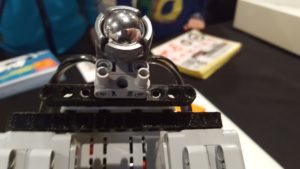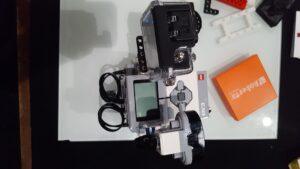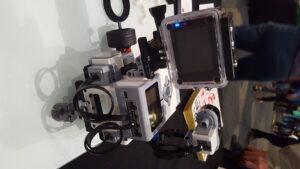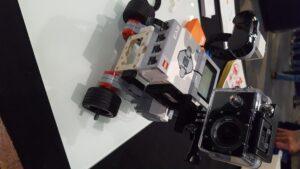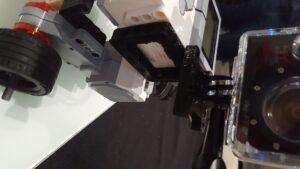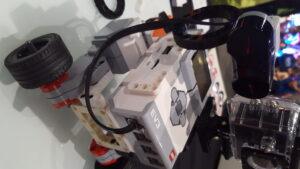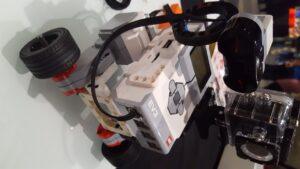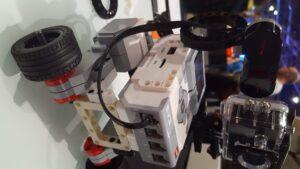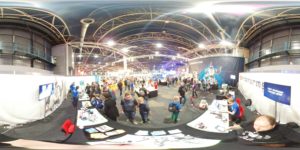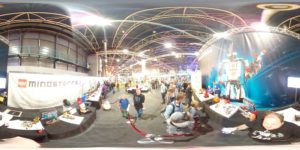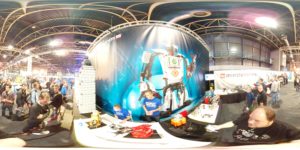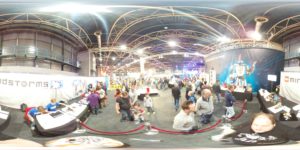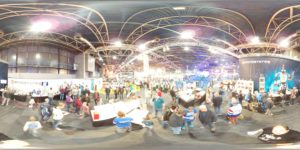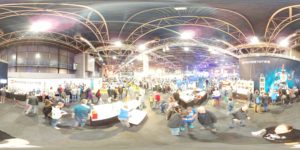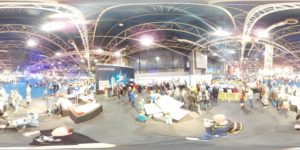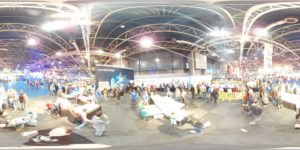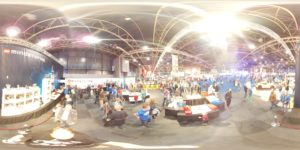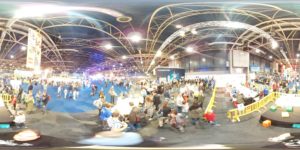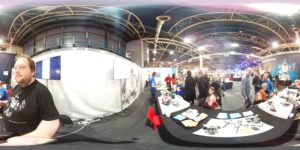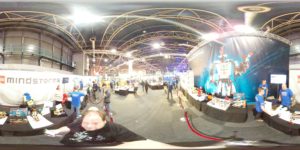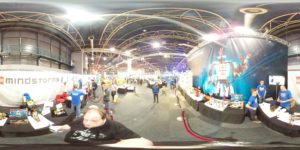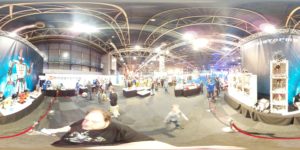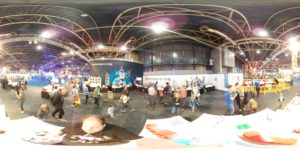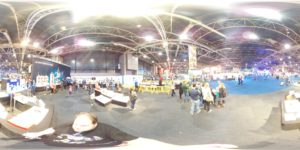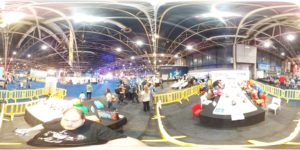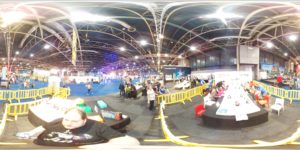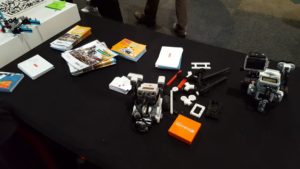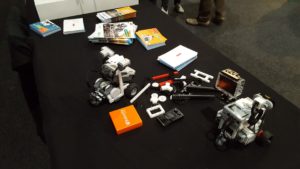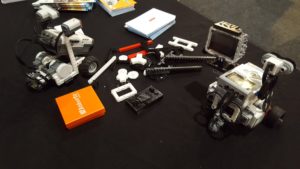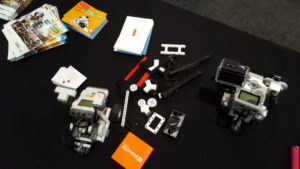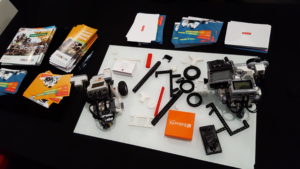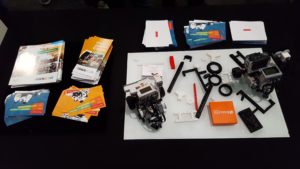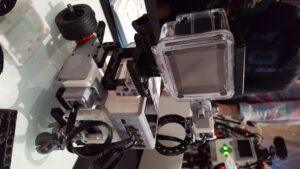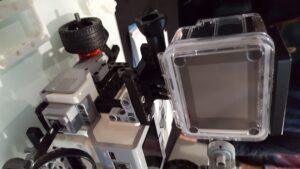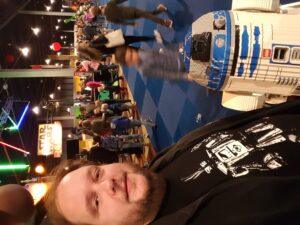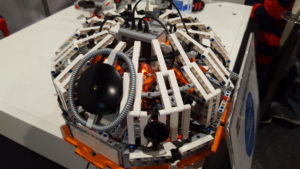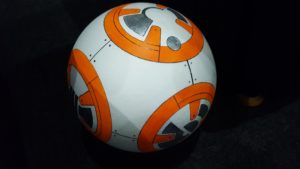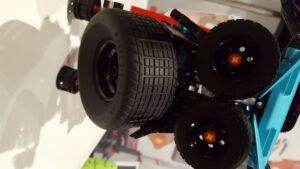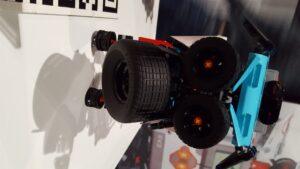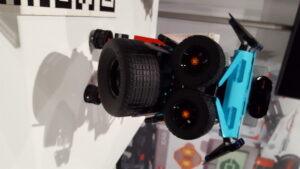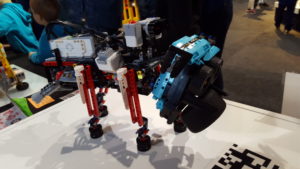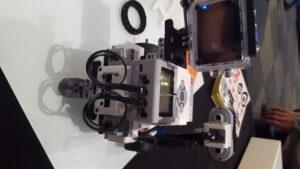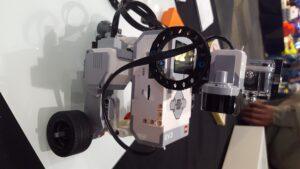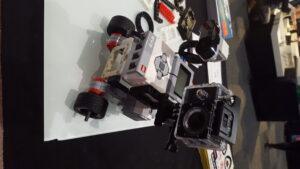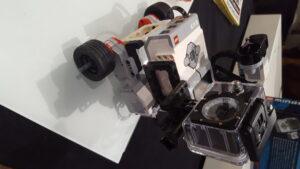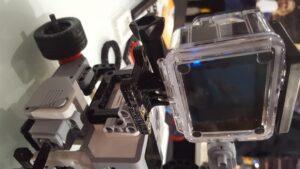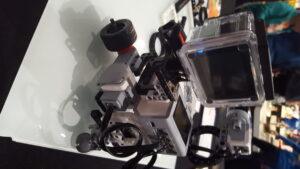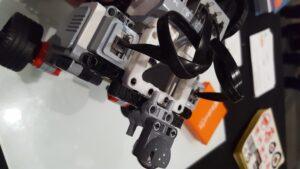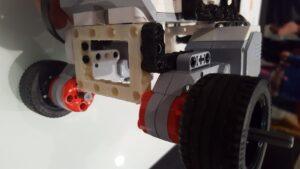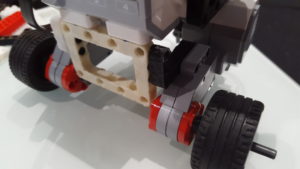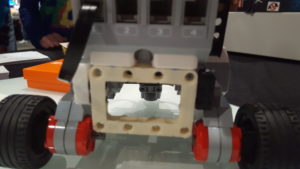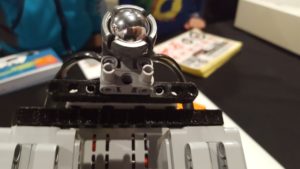Archiv der Kategorie: Fun
Revolutionizing Consumer Technology: a Robot that Doubles as a Self Moving Suitcase
Technology is rapidly evolving and changing the way that we go about living our daily lives. We’re living in an era were phones are able to do thousands of different things and cars can drive by themselves. Yet for all of this innovation, traveling and carrying things with you has remained relatively the same over the last couple of decades. Luggage hasn’t benefited from the rapid technological advances of the 21st century.
That is until now. Travelmate is a new type of robot that doubles as an affordable self moving suitcase. It moves by itself and thinks for itself thanks to a variety of sensors and integrated artificial intelligence. It’s fully autonomous, meaning that it moves on its own through all types of terrain. Travelmate easily navigates through crowds, uneven environments and other obstacles.
This robot doesn’t need any extra accessories and uses your smartphone’s location to follow you around. It adjusts to your speed and can go up to 6.75 mph, so it’ll never be far behind. It also has LED indicators which will show you where it’s planning to go.
David Near, Travelmate’s CEO, says that, “one of our top priorities is to make sure that Travelmate is as secure as possible”. That’s why you can see exactly where it is at all times through the Travelmate app on your smartphone. If someone else wants to take your Travelmate, it will sense that it isn’t following you anymore and will lock its wheels, which will prevent it from being moved. You can also activate audible alarms through the Travelmate app. These security features mean that it’s virtually impossible to lose it.
Travelmate has plenty of features. It has managed to re-invent the wheel – literally. Travelmate uses unique omni wheels that allow for precise adjustments in movement. It has such an incredible range of movement that it can turn 360 degrees without moving from its place.
You can tell your Travelmate to follow you from the side, from the front or from the back through the Travelmate application.
Travelmate is an autonomous suitcase, but it’s also the first affordable all purpose robot. It has the potential for hundreds of features and real world applications. It can be a camera operator, security robot, or a robot companion. There’s no limit to the potential that Travelmate has.
That’s in large part due to the team behind this one of a kind suitcase. Travelmate Robotics was formed as a separate company to launch consumer robots at an affordable price point. They’ve been developing Travelmate for over a year before officially announcing it. Their team consists of developers who have been manufacturing autonomous commercial robots for 8 years. They include robotics specialists, designers and even people who’ve worked on prototypes for space exploration rovers.
So it’s no wonder why Travelmate is so innovative and unique. You can pre-order a Travelmate right now through indiegogo at a starting price point of 399$. However, this price might not last long, because distributors are already in contact with Travelmate Robotics.
Distributors in more than 30 countries are already in negotiations to carry their suitcase in their stores. What that means is that pre ordering now may be your only chance to get one at such a low price. David Near says that, “we’re very happy that investors and distributors have expressed interest in our company. We are always open towards new partnerships and proposals”.
In any case, traveling is about to get a whole lot easier. Technology is constantly moving us forward and Travelmate is at the forefront of that.
RoboCup German Open im kommenden Jahr wieder in Magdeburg
RoboCup Saison 2017 beginnt – Anmeldungen ab sofort möglich
Die RoboCupper kommen wieder: Die RoboCup German Open werden im nächsten Jahr erneut in Magdeburg stattfinden. Vom 5. bis 7. Mai 2017 ist die Landeshauptstadt bereits zum siebten Mal Gastgeber für dieses internationale Robotikturnier. Die zentrale Online-Anmeldung ist ab sofort unter www.robocupgermanopen.de möglich.
„Wir wollen Magdeburg weiter als Wissenschaftsstadt positionieren und dabei helfen uns auch die RoboCup German Open, für die wir gern wieder Gastgeber sind“, sagt Oberbürgermeister Dr. Lutz Trümper und lädt alle Interessierten in die Ottostadt ein. „Magdeburg freut sich auch im siebten Jahr auf die zahlreichen Teams und Akteure, die unsere Messehallen im kommenden Frühjahr erneut für einige Tage in eine Arena für Roboter verwandeln.“
Zu den RoboCup German Open werden rund 1.000 Schülerinnen und Schüler sowie Studierende, Forscher und Wissenschaftler aus dem In- und Ausland erwartet. Die Wettbewerbe dienen den Wissenschaftlern und Studenten als publikumswirksames Testfeld zur Demonstration der Fähigkeiten heutiger Roboter. Es wird zwischen RoboCup Major, dem Wettbewerb der Wissenschaftler, und RoboCup Junior, dem Nachwuchswettbewerb, unterschieden. RoboCup Major ist das inspirierende Forschungs- und Vernetzungsumfeld für internationale Forscherteams, RoboCup Junior der attraktive Wettbewerb für technikbegeisterte Schüler.
Anmeldungen unter www.robocupgermanopen.de Anmeldungen für die RoboCup German Open sind seit heute möglich. Da die Anzahl der aktiven Schülerteams in den vergangenen Jahren stark angestiegen ist, müssen sich die bundesweit über 460 Teams im Nachwuchswettbewerb RoboCup Junior zunächst in regionalen Vorturnieren für eine Teilnahme in Magdeburg qualifizieren. Im Frühjahr 2017 finden sechs Qualifikationsturniere statt: in der Universität Hannover (6. bis 8. Februar 2017), in der Hochschule Mannheim (11. und 12. Februar 2017), im Kulturzentrum Vöhringen (18. und 19. Februar 2017), in der Hochschule Bonn-Rhein-Sieg (18. und 19. Februar 2017), in der kooperativen Gesamtschule Rastede (8. bis 10. März 2017) und in der Urania Berlin (11. und 12. März 2017).
Wer sich bei einem dieser Turniere qualifiziert, trifft beim Finale im Mai in Magdeburg auf die besten RoboCup Junior Teams aus ganz Deutschland. Dort werden die deutschen Meister in den drei Disziplinen OnStage, Rescue und Soccer ermittelt. Die Besten qualifizieren sich zudem für eine Teilnahme an der RoboCup- Weltmeisterschaft, die 2017 im japanischen Nagoya stattfindet.
Die Online-Anmeldung für die RoboCup-Junior-Qualifikationsturniere 2017 ist bis zum 30. November 2016 möglich. Die internationalen Teams aus dem RoboCup-Major-Bereich haben etwas mehr Zeit. Sie können sich bis zum 15. Dezember anmelden. Die Registrierung ist ausschließlich unter https://robocupgermanopen.de möglich. Dort stehen auch alle weiteren Informationen zu den sechs Qualifikationsturnieren und zu den RoboCup German Open 2017 in Magdeburg zur Verfügung.
Die Landeshauptstadt Magdeburg ist seit 2010 Gastgeber für die RoboCup German Open, eine der größten europäischen Robotikveranstaltungen. Die Magdeburger Robotik-Teams schneiden außerdem bei den internationalen Wettkämpfen sehr gut ab. So errangen in diesem Jahr bei der RoboCup-Weltmeisterschaft in Leipzig gleich zwei Teams des Werner- von-Siemens-Gymnasiums Weltmeister-Titel in der Junior-Kategorie Rescue Maze. Das Team robOTTO der Otto-von-Guericke Universität nahm erfolgreich in der Forscherliga RoboCup@Work teil und erreichte den vierten Rang.
Die Unternehmen HARTING KGaA, MathWorks, MICRO-EPSILON MESSTECHNIK GmbH & Co. KG, PHOENIX CONTACT GmbH & Co. KG, regiocom GmbH und der Arbeitgeberverband Gesamtmetall im Rahmen der Initiative think ING haben bereits ihre Unterstützung der RoboCup German Open in Magdeburg zugesagt.
RoboCup German Open 2017: Call for Participation
RoboCup German Open 2017
Call for Participation
https://www.robocupgermanopen.de
5 – 7 May 2017
MESSE MAGDEBURG, Germany
The RoboCup German Open 2017 will be the 15th open RoboCup
competition held in Germany. The event will take place in Magdeburg
at MESSE MAGDEBURG.
— RoboCup Major Leagues (international teams) ———————-
Competitions are offered in the following leagues:
– RoboCupSoccer Standard Platform League
– RoboCupSoccer Humanoid League (Kid-Size)
– RoboCupRescue Robot League
– RoboCup@Home League
– RoboCupIndustrial Logistics League
– RoboCupIndustrial RoboCup@Work League
The registration deadline is *** 15 December 2016 ***.
Visit http://www.robocupgermanopen.de to register your RoboCup Major
League team. Details on the registration (fee, accommodation, rules)
are available on the web site. Booking of blocked accommodation with
special rates is possible after your registration.
The Major Leagues Organising Committee:
– Thomas Röfer (Standard Platform League)
– Reinhard Gerndt (Humanoid League)
– Johannes Pellenz (Rescue Robot League)
– Sven Wachsmuth (RoboCup@Home League)
– Ulrich Karras (Logistics League)
– Sebastian Zug (RoboCup@Work League)
— RoboCup Junior —————————————————-
The German RoboCup Junior qualification for RoboCup 2017 is performed
in two steps. German teams qualify in six local tournaments in Berlin,
Hannover, Mannheim, Rastede, Sankt Augustin and Vöhringen for the
17th German RoboCup Junior Championship which is held within the
RoboCup German Open 2017. The best Junior teams will qualify for
RoboCup 2017 in Japan.
— Important dates ————————————————–
15.12.2016 Registration deadline RoboCup Major teams
15.02.2017 Registration deadline team members with names
15.04.2017 Registration fee due
03.05.2017 Set-up day Major League teams
04.05.2017 Set-up day Major League teams
05.05.2017 Competition day (open to public)
06.05.2017 Competition day (open to public)
07.05.2017 Competition day, finals (open to public)
Please contact [email protected] for any questions.
See you all again at the 15th RoboCup German Open 2017!
Harvard University Based Startup Launches New Robot, Root, That Teaches Anyone To Code

All ages and skill levels can learn coding in an intuitive, interactive way.
CAMBRIDGE, Mass. October 26, 2016 – Scansorial, a startup emerging from Harvard University, is on a mission to bridge the coding gap with the launch of their newest invention, Root: a fun, easy-to-use robot which teaches coding to anyone ages four to 99. Root has over 50 sensors and actuators with which it can draw, erase, play music, explore its world, and even defy gravity by using magnetism to drive on wall mounted whiteboards — making coding activities applicable to a range of topics, social, and way more cool.
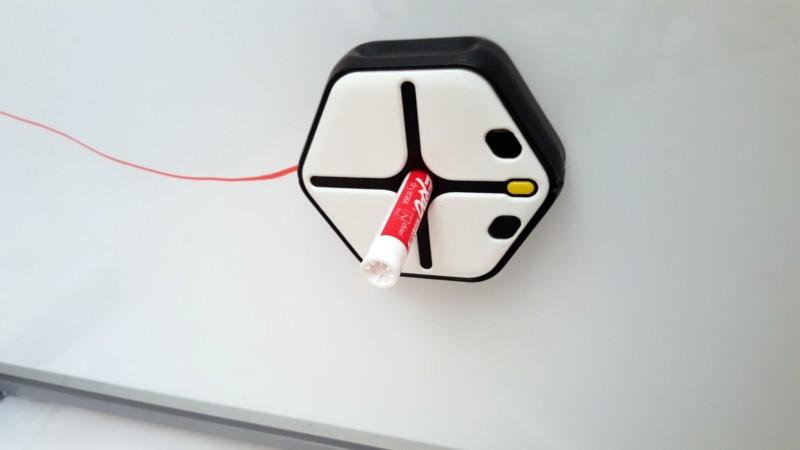
With its interactive nature and easy setup, Root is the perfect tool for learning from authentic coding experiences at home, with teachers in classrooms, and has a social platform to share programs around the world. Root appeals to children as young as four and grows with them as a familiar and consistent platform — offering years of learning opportunities rather than days. As their coding skills improve, they’ll advance from programming with a blocks-based graphical interface (a child can use it even before they know how to read) to programming with fully text-based languages like Swift, JavaScript, and Python.
Another thing that makes Root special is the interplay with iPad. Not only is it programmed from an iPad, with Root’s app the iPad sensors can be used to interact with Root in real-time (for instance, the iPad can be programmed to act as a steering wheel.) Programs can be modified even while they’re running which facilitates the real-time debugging of code as children flexibly pause, step through, or add instructions at any point. Root also promotes agent-based thinking by showing exactly what the robot sees on the iPad.

“We have a big problem in our country, nine out of 10 parents want their kids to learn computer science but only one out of 10 elementary schools actually teach it. This leaves 58 million kids stuck in the middle not knowing how to get a computer science education,” Zee Dubrovsky, CEO of Scansorial.
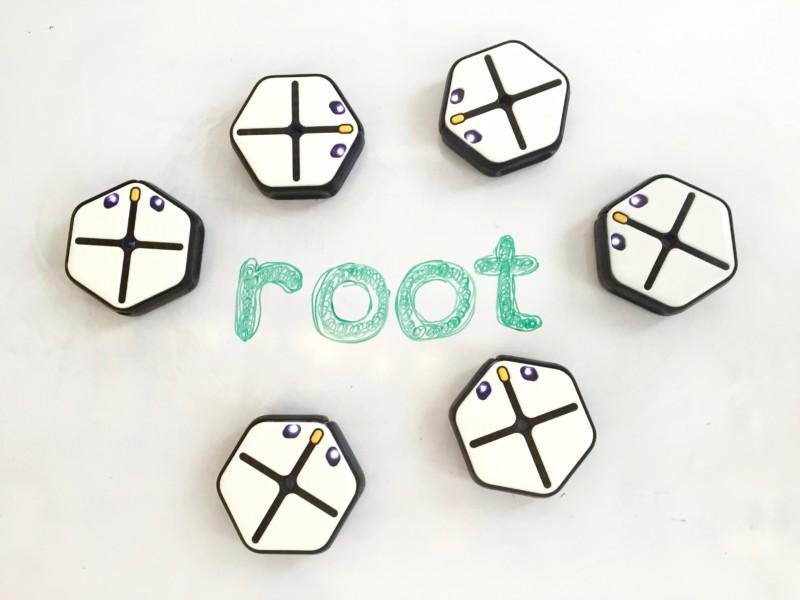
“We are thrilled to support Root as it heads out to change the world of education. iRobot is committed to STEM learning and excited to see one of our alumni carry this passion forward in a startup aimed at bringing robotics and programming into homes and classrooms.“ Colin Angle, CEO of iRobot.
About Scansorial, PBC
Founded in 2016, Scansorial is a Public Benefit Corporation on a mission to make coding accessible for learners of any age. Scansorial makes robots, apps, and curricula that allow people to instantly set up, create, and share interactive coding lessons. Robots are the best way to engage in the journey of learning how digital stuff really works. Scansorial is a privately-held company headquartered in Cambridge, MA.
Root Team
The Root team has over 50 years of collective experience in launching and building consumer products (iRobot, Sonos, Apple) and software/education services (Microsoft, Disney, PLTW, Harvard, MIT). This includes launching four coding robots (Create, Kilobot, AERobot, Multiplo), launching two graphical coding environments (MIT App Inventor, Minibloq), and launching three consumer robots (Roomba, Scooba, Looj).
It is now possible to pre-order Root exclusively through Kickstarter through November 30. A limited number are priced at $145 which is only a fraction of its retail value. With a pledge of only $10, the campaign will put that money aside for schools in need that can’t afford Root. For any backers with deeper pockets, a pledge of $10,000 will put 60 Roots in a school of their choice and the campaign will promote these backers as a School Hero. Follow #SchoolHero to see who out there will step up to the plate and join this cause.
Kickstarter page: http://kck.st/2exTJN8
Video showing LEGO MINDSTORMS booth at Legoworld Utrecht 2016
Pictures from Legoworld Utrecht 2016
- SAMSUNG
- SAMSUNG
- SAMSUNG
- SAMSUNG
- SAMSUNG
- SAMSUNG
- SAMSUNG
- SAMSUNG
- SAMSUNG
- SAMSUNG
- SAMSUNG
- SAMSUNG
- SAMSUNG
- SAMSUNG
- SAMSUNG
- SAMSUNG
- SAMSUNG
- SAMSUNG
- SAMSUNG
Real Warbots
A fundamentally new approach to real-time strategy games! We transfer the mechanics of genre from the virtual world into the real world, on the real robots.
https://www.kickstarter.com/projects/382353368/real-warbots
Real Warbots is a strategy game for two or more players. Game mechanics is the same as computer real-time strategy games. As usual, players will collect resources, defend the base and eliminate the enemies. However, the game is not on the computer screen, but in the real world with the participation of real robots. Moreover, as there are robots, the control will be also different from the standard “clicking and dragging”.
There are three types of robots: Scout, Worker and Tank

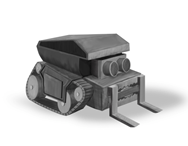
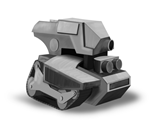
It is a seemingly well-known set of actions as in all RTS games; however, these are robots, and nobody is preventing players from racing with obstacles, hunting the cats, passing beer bottles or anything else that may spring into your mind.
Controlling robots
The player must make an algorithm of robot actions from simple blocks like shoot, move, turn etc. After that, the algorithm is wirelessly sent to the robot who begins to carry out his task. If the situation changes, the player makes a new algorithm, sends it to the robot and it starts acting in a new way.
The player is free to make algorithms of any difficulty. Someone will make them small, of several clicks, and will be sending new tasks to the robot all the time. Another player will spend some time before the game and make a big algorithm from maybe thousands of commands.
Which approach is right for you will show only practice and player experience.
Map.
Everything that the robots see by their sensors is displayed on the screen on the player’s map. Obstacles are shown as simple lines and help to understand where the robot can’t go. Other robots or resources are shown with the special icons.
It helps the player to understand the distance between robots and their surroundings even if he can’t see it by his eyes.
Personification.
Every robot has its own identification number given to him “at the factory” that will never be changed. That means every robot will be unique and have its own name.
The number of each robot will be placed in the general base and all its victories on official competitions will be written in the hall of fame of Real WarBots.
Accessories.
Apart from robots, there are several other things necessary for the game:
- “Energy” and “Materials”.
- Walls
- Ammo for Robot-Tank
- Beacons(optional)
- Factory(optional)
Heroes.
Robots get experience points which can be spent on improving the various characteristics: hit points, speed, etc. or for the purchase of various perks.
Later, will be created the robots-heroes with the best abilities, possibly on a completely different chassis, such as hexapods
Interface
Players are provided with software environment. It can be divided into several areas for convenience:
- a working area, where you can make the algorithm from several blocks;
- a map with obstacles which robots see around them;
- a list of buttons for program blocks;
- a list of player’s robots. Every robot has its own identification number, the part of which will be shown in the list
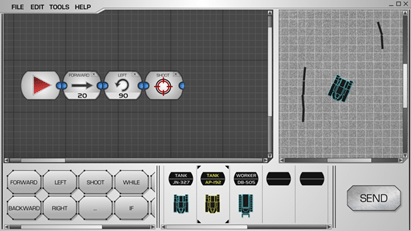
Kickstarter Site: https://www.kickstarter.com/projects/382353368/real-warbots
Anki launches critically acclaimed Cozmo robot
A Little Robot with a Big Personality, Cozmo Marks a New Era for Consumer Robotics
Anki’s Cozmoments Marketing Campaign Highlights the Emotional Connection Possible Between Robot and Human
October 17, 2016 – San Francisco, CA — Anki, the consumer robotics and artificial intelligence (A.I.) company, today announced it has launched Cozmo – one of the most sophisticated consumer robots on the market. “Unlike its less sophisticated predecessors in the toy market, Cozmo has advanced software to backup its smarts,” notes The Verge. Tech aside, Cozmo is a small bot with a big brain and an even bigger personality. According to The Wall Street Journal, “Cozmo has more personality and charm than any other robot toy I’ve played with,” and Gizmodo opines, “You can play with Cozmo for twenty minutes and forget all about it being a toy. It feels…real.” Cozmo is charming, a bit mischievous, and unpredictable. He recognizes and remembers people over time through games and playful interactions. Priced at $179.99, Cozmo is available in the U.S. at major retailers including Toys”R”Us, Apple Store, Best Buy, Amazon.com and Anki.com.
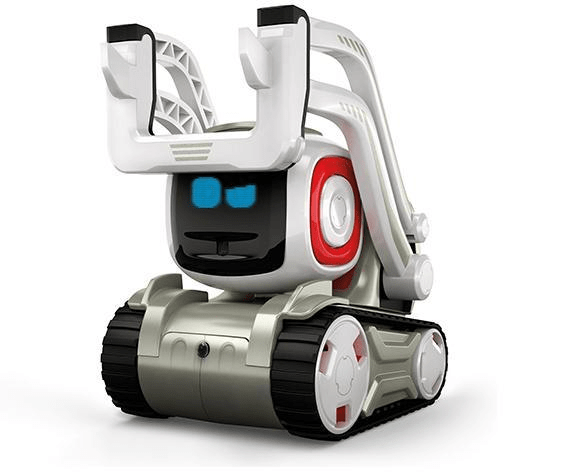
“Cozmo not only represents a significant engineering milestone, but is a physical manifestation of robots that have a deep personality and character like the ones we’ve come to love in Hollywood films,” said Boris Sofman, co-founder & CEO, Anki. “We are setting a new standard for the types of emotional experiences people can expect from consumer robotics products, and we are incredibly excited for everyone to meet Cozmo. Our robot is more than a breakthrough in entertainment as the technology within Cozmo will play an integral role in shaping other aspects of our lives.”
Always Game. Cozmo refuses to sit tight and wait for fun. He’s ready to play. The more Cozmo and his human friend get to know each other, the more skilled he’ll become as new activities and upgrades are unlocked. The free Cozmo app, which runs on compatible iOS, Android and Kindle Fire devices, comes packed with gameplay content and constantly introduces new ways to play. Cozmo even brings his own toys to the game — three interactive Power Cubes that he’s always willing to share. So whether he’s playing with his Power Cubes or challenging players with his favorite games of speed and skill, he’s always ready for action.
Similar to Anki’s robotic battle-racing hit, Anki OVERDRIVE, new content and game modes are introduced via free software updates, which ensures that the relationship with Cozmo will stay fresh and exciting year round. A software update, which includes new game mode and features, will be rolled out in December in time for the holidays.
Hundreds of Emotions. A Few Tricks Up His Sleeves. Cozmo’s emotions aren’t random. His personality, driven by powerful A.I., is brought to life with complex facial expressions, a host of emotions, and his own voice and emotive language. His vision system, which includes a camera on the front of his OLED face, allows him to constantly scan his environment and recognize people. His eyes even light up when he sees a familiar face. Cozmo also comes with his own dynamic soundtrack that matches his mood and corresponds with the games and activities, elevating playtime to a uniquely cinematic experience. This merger of robotics, deep A.I., game design, and a film-like approach to developing Cozmo’s character, brings to life an experience that has never been thought possible or implemented outside of a movie screen.
The Little Bot with Super-powered Smarts. There’s more to Cozmo than what meets the eye. His powerful technology lets him survey the world, explore it, and make decisions based on his mood. He is the product of over six years of steadfast research and development by a team comprised of some the best and brightest people across a variety of disciplines including PhD roboticists, world- class animators, renowned game developers, and a lead designer of the Batmobile. Powered by advanced robotics, A.I., and computer vision, Cozmo has a brain that processes more data per second than all the Mars rovers combined. More than three-hundred parts make up Cozmo, but his deceptively small size means he can fit in the palm of your hand.
Anki is also introducing the Cozmo Software Development Kit (SDK) Beta, a free, intuitive and connected robotics platform that’s as useful for makers and hobbyists as it is for educators and researchers. With the SDK, Anki is giving consumers unprecedented access to robotics in a highly versatile package. It’s powerful but easy to use, complex but not complicated, and can be used in industries ranging from entertainment to academia.
Cozmo retails for $179.99 and ships with one base charger and three interactive Power Cubes. For a full list of current device compatibility, visit here:
Keep up with @Anki news & connect with us at: Twitter.com/Anki, Facebook.com/Anki, YouTube.com/Anki, and Instagram.com/Anki!
3D printing will be super easy with Doodle3D Transform, now on Kickstarter
Doodle3D, based in The Netherlands, is working on their second crowdfunding campaign on Kickstarter. They are launching their new 2D-to-3D design app called Doodle3D Transform, which makes 3D-design and 3D-printing childsplay. The campaign runs until the 21st of October and has currently achieved 50% of its target.

In the application, simplicity is key. What makes it stand apart from the many other 3D design applications, is the fact that the user designs 3-dimensional shapes based on flat (2D) drawings.
Because of its accessibility, anyone can use the app to create their ideas, no matter their age or background.
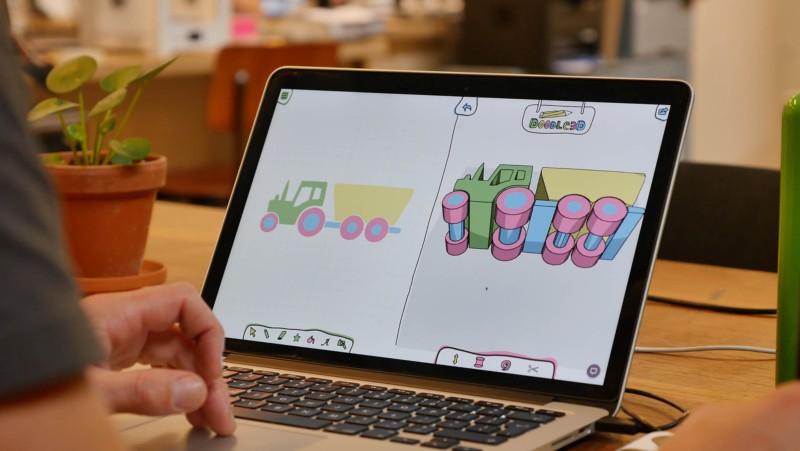
Doodle3D Transform runs on Android, Apple and Windows tablets and computers. Designs can be 3D printed with your own 3D printer, or by using one of the many 3D printing services. The Doodle3D WiFi-Box, which was successfully funded on Kickstarter in 2013, can be used to wirelessly print your designs. For more information visit www.doodle3d.com.

